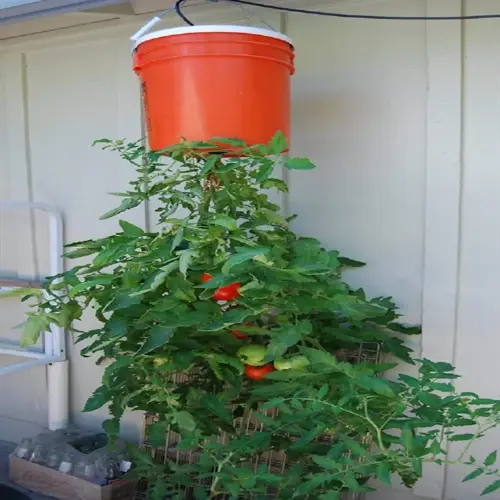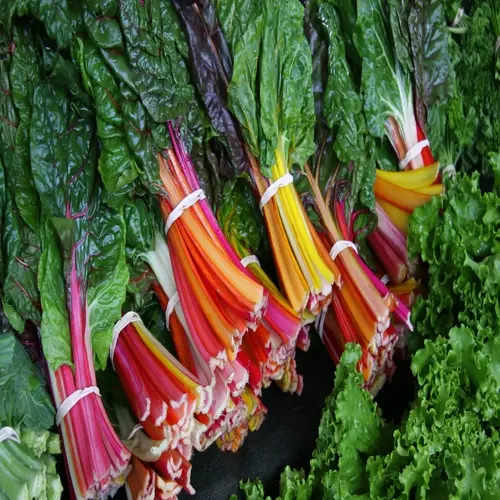How to Grow Tomatoes: Essential Steps for Success

Written by
Benjamin Miller
Reviewed by
Prof. Samuel Fitzgerald, Ph.D.Grow tomatoes right by choosing varieties resistant to disease that are appropriate for your climate
Plant plants deep in warm soil after frost risk has passed to promote strong roots
Water consistently at the soil level and mulch the soil to maintain moisture and temperature
Support plants with tomato stakes or cages, and prune suckers to optimize growth
Harvest ripe fruit when it is fully colored and slightly soft to promote optimal flavor development
Do not fall for common myths like using Epsom salt to fix blossom end rot.
Article Navigation
To learn on how to grow tomatoes you first need to understand why tomatoes are the most popular garden plant in the world. These colorful fruits offer the most homegrown crop, and rightly so. You get flavor you can't purchase, and unmatched flavor at that! Growing your own plants will save you money in the long term. You gain fruits and vegetables that are perfect for fresh salads or canning.
This guide removes the guesswork for new gardeners. I'll guide you through the necessary steps, drawing on twenty years of experience growing tomatoes. Forget the complicated, technical stuff. Consider soil temperature and the appropriate variety. You become confident in your practice with the simple basics. You set yourself up for success by establishing yourself correctly.
Choosing the Right Tomato Varieties
Selecting your tomato varieties involves an understanding of growth patterns. Indeterminate varieties can continue to grow for the entirety of the season. They require robust staking. Determinate varieties remain compact and set fruit all at once. Choose according to the space you have and your desire for harvests. I leverage both strategies in my small garden.
Check plant tags for disease resistance codes like VFNT. Intermediate letters represent resistance to pathogens. The V and F represent Verticillium wilt and Fusarium, respectively. I have lost plants before understanding this code system, and now I look at every plant tag.
If you're just getting started, consider cherry tomatoes. Varieties such as Sweet Million are rapid producers and forgiving of mistakes that a beginner gardener may make. I would definitely recommend trying them as first-timers. You get fast victories that build your confidence. It's also true that heat-loving types do best in our southern gardens.
V - Verticillium Wilt
- Information: Fungal disease causing yellowing and wilting leaves in tomato plants through soilborne pathogens that infect vascular systems leading to reduced yields.
- Information: Most active in cooler temperatures below 75°F (24°C) with prevention requiring crop rotation and resistant plant varieties showing V codes on labels.
- Information: Identified by V-shaped yellow patterns on leaves that progress to brown necrosis and plant death if left untreated season after season.
F - Fusarium Wilt
- Information: Aggressive soil fungus causing drooping foliage and brown discoloration in vascular tissue that blocks water movement upward through plant stems.
- Information: Thrives in warm soil above 75°F (24°C) with FF indicating resistance to both Fusarium races 1 and 2 for comprehensive protection.
- Information: Enters through root systems and spreads rapidly during wet conditions requiring resistant varieties for effective long-term garden management.
N - Nematodes
- Information: Microscopic worms causing swollen root galls that stunt growth and reduce nutrient uptake especially problematic in sandy soil conditions.
- Information: Controlled through crop rotation and resistant varieties that develop root systems preventing nematode reproduction and spread between plants.
- Information: Nematode-resistant tomatoes show N codes and perform better in infected soils without requiring chemical treatments for root protection.
T - Tobacco Mosaic Virus
- Information: Highly contagious viral disease causing mottled yellow-green leaf patterns that reduces photosynthesis and overall plant vigor significantly.
- Information: Spread through physical contact with infected plants or tools with resistant varieties showing T codes providing genetic immunity.
- Information: Prevented through sanitation practices and resistant cultivars that maintain productivity even when exposed to common virus strains.
A - Alternaria Leaf Spot
- Information: Fungal infection causing dark concentric spots on leaves that expand into lesions leading to premature defoliation and sunscald damage.
- Information: Favors humid conditions with spores spreading through rain splash requiring good air circulation and resistant varieties for control.
- Information: Managed through A-resistant tomatoes that maintain foliage integrity during wet seasons without frequent fungicide applications.
LB - Late Blight
- Information: Destructive disease causing water-soaked lesions that turn brown and fuzzy during humid conditions killing plants rapidly if untreated.
- Information: Same pathogen that caused Irish potato famine spreads quickly in cool wet weather requiring preventative copper treatments.
- Information: Resistant varieties show LB codes and offer protection against this devastating pathogen that can ruin entire tomato crops.
ASC - Alternaria Stem Canker
- Information: Fungal infection causing dark cankers on stems that girdle and kill branches leading to reduced fruit production and plant death.
- Information: Enters through wounds and spreads in warm wet conditions with resistant varieties showing ASC codes for improved survival rates.
- Information: Managed through sanitation and resistant cultivars that maintain stem integrity without requiring frequent chemical interventions.
St - Stemphylium Gray Leaf Spot
- Information: Fungal disease causing small gray spots that coalesce into large necrotic areas reducing photosynthetic capacity and fruit quality.
- Information: Thrives in high humidity and moderate temperatures with resistant varieties showing St codes for improved leaf retention.
- Information: Prevented through adequate spacing and resistant tomatoes that maintain healthy foliage throughout the growing season naturally.
Sw - Southern Bacterial Wilt
- Information: Bacterial disease causing sudden wilting without yellowing that kills plants quickly in warm soil above 80°F (27°C).
- Information: Soilborne pathogen enters roots and clogs vascular systems with resistant varieties showing Sw codes for southern gardens.
- Information: Managed through soil solarization and resistant cultivars that survive in infected areas where other tomatoes would perish rapidly.
Ma - Root Knot Nematode Mite
- Information: Nematode-mite complex causing root deformation that reduces water uptake leading to stunting especially in light sandy soils.
- Information: Controlled through resistant varieties showing Ma codes and soil amendments that discourage nematode populations naturally.
- Information: Resistant tomatoes develop root systems that prevent gall formation and maintain nutrient absorption under nematode pressure.
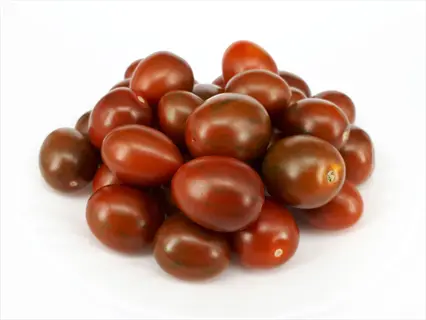
Chocolate Cherry
- Fact: These golf ball-sized tomatoes feature deep purple-red skin with complex sweet flavor perfect for snacking straight from the vine during summer months.
- Fact: As indeterminate plants they produce abundant clusters continuously from early summer through fall requiring minimal care beyond basic watering.
- Fact: Thrives in containers when planted in minimum 5-gallon (19-L) pots placed in full sun locations with well-draining soil mixtures.
- Fact: Excellent introduction for new gardeners due to reliable production and disease resistance that forgives common beginner mistakes easily.
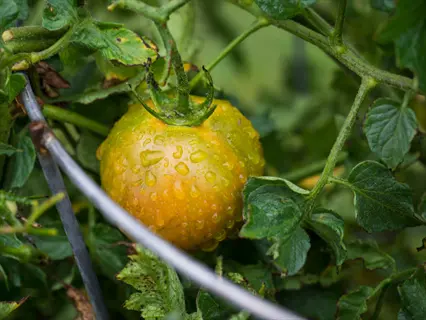
Whopper VF1F2NT
- Fact: Hybrid variety producing large 10-12 oz (283-340g) beefsteak tomatoes with classic flavor and resistance to multiple soil diseases.
- Fact: Features VF1F2NT code indicating protection against verticillium fusarium races nematodes and tobacco mosaic virus for robust growth.
- Fact: Requires sturdy 6-foot (1.8-m) supports for vigorous indeterminate vines that produce heavy yields throughout warm seasons.
- Fact: Ideal for gardeners wanting large slicing tomatoes without constant disease management in humid or problematic soil conditions.
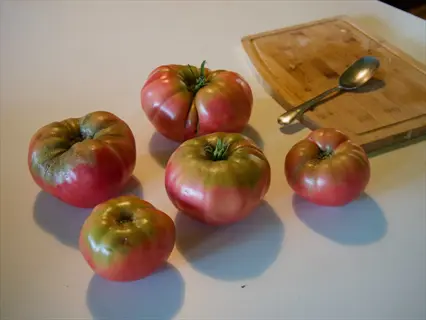
German Johnson
- Fact: Heirloom variety prized for exceptional sweet flavor and pinkish-red 1-pound (450g) fruits perfect for sandwiches and fresh eating.
- Fact: Performs exceptionally well in zones with summer temperatures consistently above 85°F (29°C) where other varieties struggle.
- Fact: Requires ample spacing of 36 inches (90 cm) between plants for optimal air circulation and disease prevention in gardens.
- Fact: While lacking modern disease resistance its heat tolerance makes it superior for southern gardens with extended hot seasons.
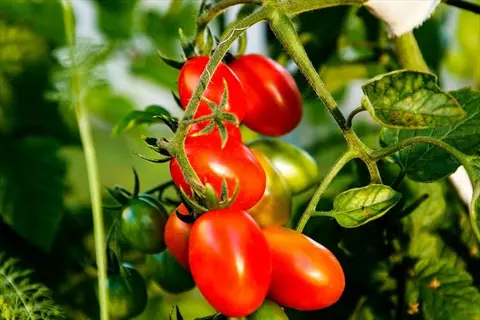
Roma VF
- Fact: Determinate variety producing abundant 3-inch (7.5-cm) plum tomatoes with dense flesh perfect for sauces canning and paste making.
- Fact: VF resistance provides protection against verticillium and fusarium wilts common in tomato beds with heavy crop rotations.
- Fact: Compact bushes grow 2-4 feet (0.6-1.2 m) tall requiring minimal staking and maturing all fruit within a concentrated period.
- Fact: Excellent choice for preserving enthusiasts wanting large harvests for processing within short timeframes during peak season.
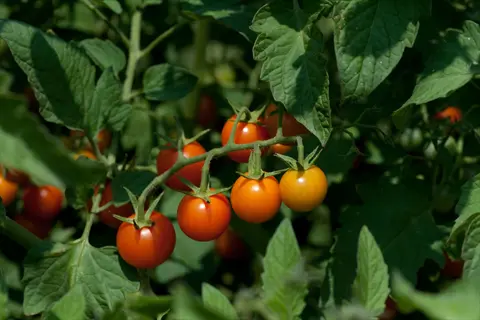
Sun Gold
- Fact: Indeterminate cherry tomato producing clusters of golden-orange fruits with exceptionally sweet tropical flavor beloved by children.
- Fact: Early maturing variety that fruits reliably even in cooler conditions making it ideal for short season northern gardens.
- Fact: Resistant to fusarium wilt and tobacco mosaic virus ensuring consistent production without common disease setbacks.
- Fact: Vigorous vines require strong supports but reward with abundant harvests perfect for salads snacking and fresh eating.
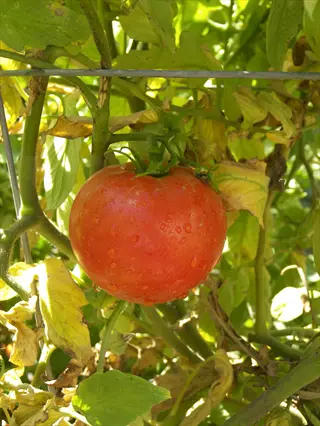
Celebrity VFFNTA
- Fact: All-purpose hybrid with VFFNTA resistance against multiple diseases producing medium-sized 7-10 oz (200-280g) globe tomatoes.
- Fact: Semi-determinate growth habit combines continuous harvest with manageable 3-4 foot (0.9-1.2 m) bush size for smaller spaces.
- Fact: Excellent disease package protects against verticillium fusarium nematodes tobacco mosaic and alternaria for reliable yields.
- Fact: Ideal for gardeners wanting versatile tomatoes for both fresh eating and processing with minimal pest management required.
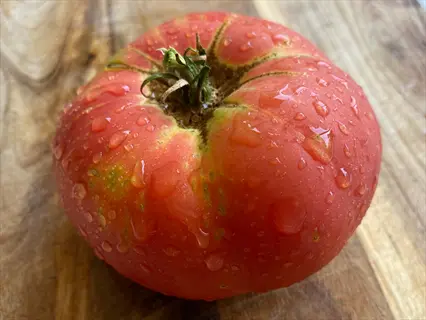
Brandywine
- Fact: Legendary heirloom producing massive 1-2 pound (450-900g) pink beefsteaks with rich complex flavor unmatched by hybrids.
- Fact: Requires long warm seasons to mature fully but rewards patient gardeners with exceptionally delicious slicing tomatoes.
- Fact: Tall indeterminate vines need extra-sturdy supports and benefit from regular pruning to maximize fruit size and quality.
- Fact: While lacking modern disease resistance its legendary flavor makes it worth extra care for tomato connoisseurs and enthusiasts.
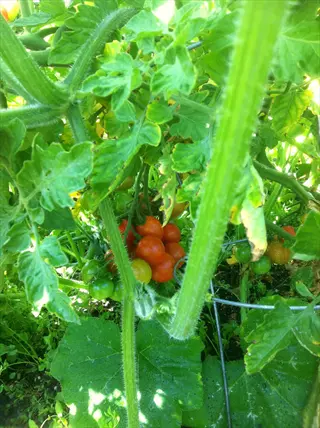
Sweet Million
- Fact: Indeterminate cherry tomato producing long clusters of crack-resistant red fruits with perfect sweetness balanced by mild acidity.
- Fact: VFFNT disease resistance provides protection against common wilts and viruses for reliable production season after season.
- Fact: Exceptionally vigorous vines require tall supports but produce hundreds of tomatoes continuously from summer to frost.
- Fact: Perfect for children's gardens and container growing where abundant sweet snacks encourage daily garden interaction.
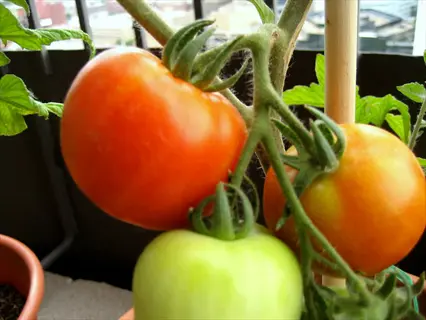
Early Girl
- Fact: Popular hybrid maturing in just 50 days producing medium-sized 4-6 oz (110-170g) red tomatoes early in the season.
- Fact: VFN resistance protects against major diseases while indeterminate vines continue fruiting until frost in most climates.
- Fact: Excellent choice for short season areas or gardeners wanting early harvests before peak summer heat affects fruit set.
- Fact: Performs well in both garden beds and large containers when provided with consistent moisture and full sun.
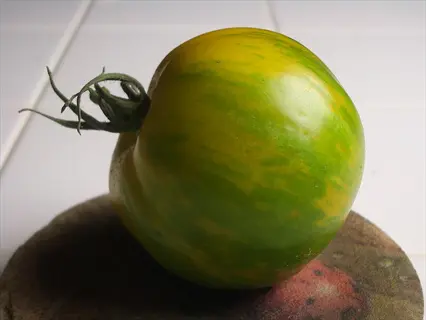
Green Zebra
- Fact: Unique heirloom producing 2-3 inch (5-7.5 cm) green-yellow striped tomatoes with tangy flavor and firm texture.
- Fact: Indeterminate plants are naturally resistant to many foliar diseases and maintain productivity in humid conditions.
- Fact: Striking appearance makes it perfect for specialty markets and gardeners wanting visually interesting tomato varieties.
- Fact: Harvest when fruits develop amber stripes and slight give for optimal sweet-tart flavor balance in salads.
Planting Tomatoes for Success
Plant tomatoes only after the soil temperature has reached a minimum of 60°F (15°C). Cold soil stunts roots and can permanently damage them. Use a soil thermometer before planting. I test at a depth of 4 inches for accuracy. Warm roots take off faster for healthy plants, and to avoid premature termination failures.
Understand your area's last frost dates. Northern gardeners plant in late May. Southern zones begin planting in March. The Midwest waits until late April. Consult the dates of your local extension office. I track dates using both Fahrenheit and Celsius to be exact. Plant two weeks after the risk of frost has passed.
Planting depth varies by method. When planting in-ground tomatoes, bury them deep in the ground, up to 66% of the stem. This promotes a great root system. When planting in a container, fill pots to within 2 inches of the rim. Use at least 5-gallon pots. I always add extra drain holes.
Mix soil at specific ratios. 3 parts soil: 1 part compost. Add 1 cup per plant of crushed eggshells for Calcium. Any way you need to measure the amendments is fine - cups or grams. I typically measure out amendments on a kitchen scale to be accurate. It's important to amend properly so that you don't have deficiencies of nutrients later on.
Soil Testing
- Information: Test soil pH 6-8 weeks before planting using kit from local extension office. Ideal range is 6.2-6.8 for nutrient availability.
- Information: Amend acidic soil with 5 lbs (2.3 kg) lime per 100 sq ft (9.3 m²). For alkaline soil, add 1 lb (0.45 kg) sulfur per 100 sq ft.
Compost Integration
- Information: Spread 3-inch (7.5 cm) compost layer over planting area. Mix into top 12 inches (30 cm) of soil using garden fork.
- Information: For container planting, use 3:1 ratio of potting mix to compost in 5-gallon (19-L) minimum containers.
Nutrient Amendments
- Information: Add 1 cup (240 ml) crushed eggshells per plant for calcium. Mix with 1/2 cup (120 ml) bone meal for phosphorus.
- Information: Incorporate 1/4 cup (60 ml) balanced slow-release fertilizer (10-10-10) per planting hole before transplanting.
Drainage Enhancement
- Information: For heavy clay soils, mix in 2 inches (5 cm) coarse sand or perlite per 12 inches (30 cm) depth.
- Information: Create raised beds 8-12 inches (20-30 cm) high for improved drainage in poorly draining areas.
Pre-Planting Watering
- Information: Water planting area deeply 24 hours before transplanting to achieve moist soil 8 inches (20 cm) deep.
- Information: Create starter solution: 3 tbsp 8-8-8 fertilizer per gallon (3.8 L) water. Set aside 1 cup (240 ml) per plant.
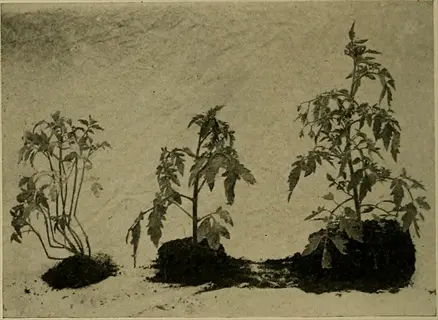
Deep Planting Technique
- Fact: Remove lower leaves and bury 2/3 of stem horizontally or vertically to encourage root development along the buried stem section within 7-10 days after planting.
- Fact: Ideal for leggy seedlings requiring planting at 45° angle in 10-inch (25-cm) deep holes spaced 24-36 inches (60-90 cm) apart depending on variety growth habits.
- Fact: Cover stems with soil mixture containing equal parts native soil, finished compost, and perlite for optimal root development and nutrient availability.
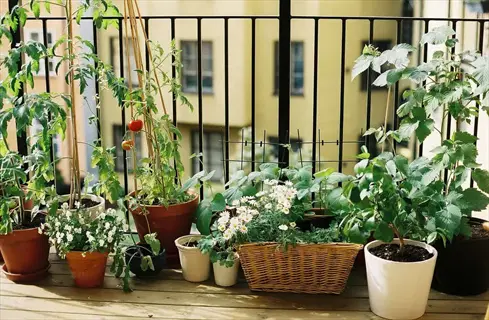
Container Planting
- Fact: Use minimum 5-gallon (19-L) pots with drainage holes filled with well-draining mix ratio of three parts potting soil to one part compost and one part perlite.
- Fact: Plant single seedlings per container burying stems up to the lowest leaves and install support stakes during planting to prevent later root damage.
- Fact: Position containers receiving minimum six hours direct sunlight elevated one inch (2.5 cm) above ground using pot feet for proper airflow and drainage.
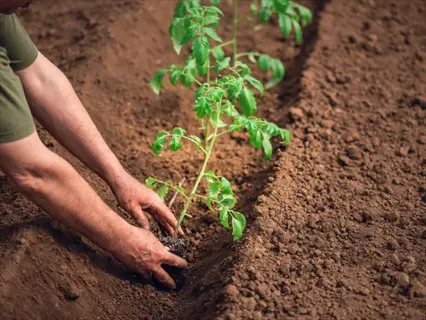
Trench Planting Method
- Fact: Dig 6-inch (15-cm) deep trenches and lay plants sideways positioning the top 4 inches (10 cm) above soil level before covering stems completely.
- Fact: Roots develop efficiently along entire buried stem sections requiring 36-inch (90-cm) spacing between trenches for indeterminate tomato varieties.
- Fact: Water thoroughly post-planting applying 2-inch (5-cm) straw mulch layer after three days to maintain consistent soil moisture levels.
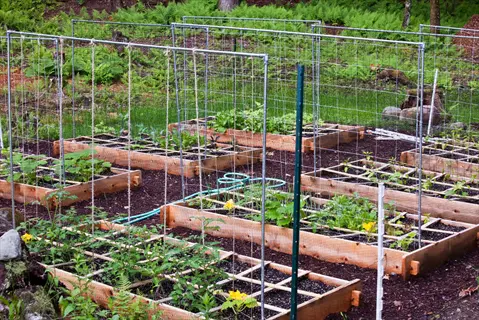
Raised Bed Planting
- Fact: Construct beds 12-18 inches (30-45 cm) high filled with soil mixture containing 60% topsoil, 30% compost, and 10% vermiculite for drainage.
- Fact: Space plants 18-24 inches (45-60 cm) apart in staggered rows allowing 36-inch (90-cm) pathways between beds for accessibility and air circulation.
- Fact: Install drip irrigation systems before planting to deliver consistent moisture directly to root zones while minimizing foliage wetness.
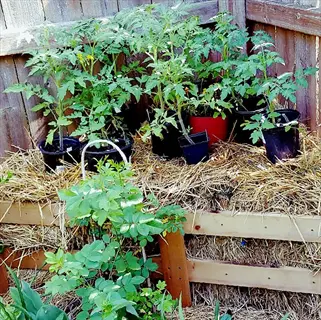
Straw Bale Gardening
- Fact: Condition bales for 10-14 days by watering daily and adding nitrogen source like 1/2 cup (120 ml) ammonium sulfate per bale to initiate decomposition.
- Fact: Plant tomatoes in pockets created by removing straw and filling with potting mix spacing one plant per bale with stakes anchored through bales.
- Fact: Water bales daily requiring approximately 1 gallon (3.8 L) per bale during hot weather to maintain consistent internal moisture levels.
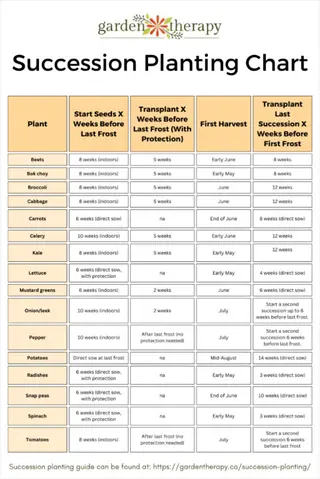
Succession Planting
- Fact: Stagger plantings every 2-3 weeks using fast-maturing determinate varieties to ensure continuous harvest throughout the entire growing season duration.
- Fact: Begin with early-season varieties like 'Early Girl' followed by mid-season and heat-tolerant types extending productivity into fall frost periods.
- Fact: Prepare new planting sites in advance amending soil with compost between plantings to maintain nutrient levels for subsequent tomato crops.
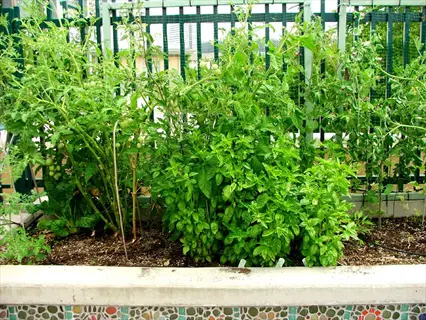
Companion Planting
- Fact: Interplant with basil improving tomato flavor while repelling pests or marigolds releasing root compounds that deter nematodes naturally.
- Fact: Space companions 12-18 inches (30-45 cm) from tomato plants avoiding competition for sunlight water and nutrients with shallow-rooted partners.
- Fact: Avoid planting near brassicas like cabbage or cauliflower which compete for similar nutrients increasing disease susceptibility when crowded.
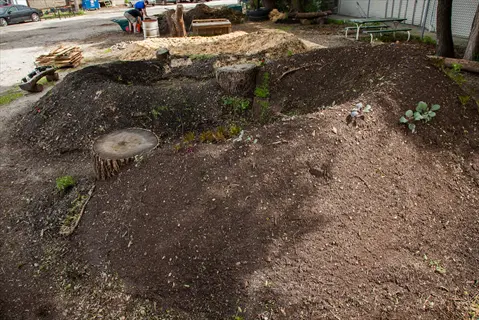
Hügelkultur Method
- Fact: Build mounds using rotting logs as base layering with branches leaves grass clippings compost and topsoil creating self-fertilizing raised beds.
- Fact: Plant tomatoes along mound sides spacing 24-36 inches (60-90 cm) apart benefiting from consistent moisture retention and gradual nutrient release.
- Fact: Ideal for poor soils as decomposing wood acts like sponge holding 3-5 times its weight in water reducing irrigation needs significantly.
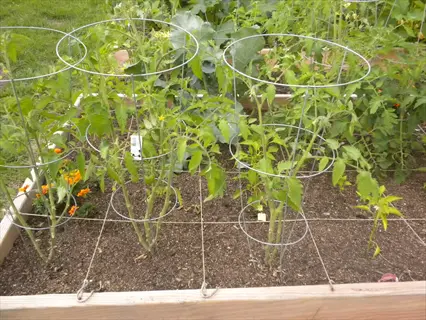
Square Foot Gardening
- Fact: Allocate 1-4 squares per plant depending on variety size with determinate types requiring one square and indeterminates needing four squares.
- Fact: Use soil mix formula: 1/3 vermiculite 1/3 peat moss 1/3 blended compost filling frames to depth of 6-12 inches (15-30 cm) minimum.
- Fact: Install vertical supports like trellises or cages at planting time to maximize space utilization and improve air circulation around plants.
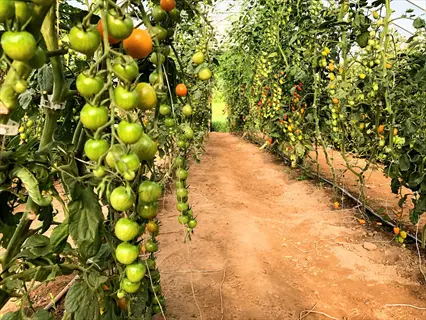
Greenhouse Planting
- Fact: Extend seasons by 6-8 weeks planting when outdoor temperatures reach 45°F (7°C) using ventilation systems to maintain 75-85°F (24-29°C).
- Fact: Use drip irrigation with automated timers providing 1-2 quarts (0.9-1.9 L) daily per plant while maintaining 60-70% humidity levels.
- Fact: Hand-pollinate flowers daily using electric toothbrush vibrating flower clusters or gently shaking plants to ensure proper fruit set development.
Essential Care: Watering, Feeding, and Mulching
Make sure to water your tomatoes deeply at the soil line regularly every 2-3 days. If there's a heat wave with temperatures above 85°F (29 °C), increase to twice a day. Container plants dry out much faster than plants in the ground and will need daily watering. I set alarms on my phone to make sure I don't miss any water sessions. Watering in the morning helps prevent loss due to evaporation. Always check the soil moisture before watering to ensure optimal watering.
Provide each plant with a stage-specific N-P-K ratio. For foliage, start with a high-nitrogen 10-5-5 fertilizer. For flowering, switch to a 5-5-5 ratio, which is a balanced blend. For fruiting, incorporate high potassium with a 5-10-10 ratio. I typically prefer Dr Earth brand for organics. Synthetic products will yield faster results, similar to Miracle-Gro.
Organic fertilizers improve soil quality by releasing nutrients over time. Synthetic fertilizers will provide instantaneous results, but there is a risk of salt buildup. I apply organic fertilizers every 4 weeks, while I apply synthetic fertilizers bi-weekly. For containers, I use fish emulsion. Use cautiously and measure amounts accurately to avoid burning the roots.
Mulch helps retain moisture and temperature. Apply 3-4 inches of straw around in-ground plants. For acid lovers, apply 2 inches of shredded leaves. For grass clippings, use a maximum of 1 inch in diameter. Refresh mulch every month. I try to avoid touching the stems and causing rot.
Starter Solution at Planting
- Information: Mix 3 tbsp 8-8-8 fertilizer per gallon (3.8 L) water. Apply 1 cup (240 ml) per plant to boost root growth.
- Information: Organic alternative: 1/4 cup (60 ml) fish emulsion per gallon water. Contains nitrogen for early development.
Vegetative Growth Phase (Weeks 4-8)
- Information: Apply high-nitrogen fertilizer (10-5-5) every 14 days. Use 1/4 cup (60 ml) per plant worked into soil surface.
- Information: Blood meal option: 2 tbsp per plant monthly. Water immediately after application to prevent burning.
Flowering Phase (Weeks 8-12)
- Information: Switch to balanced 5-5-5 fertilizer. Apply 1/2 cup (120 ml) per plant every 14 days to support bloom development.
- Information: Liquid kelp option: 1 tbsp per gallon water weekly. Provides micronutrients for flower formation.
Fruiting Phase (Week 12+)
- Information: Use high-potassium fertilizer (5-10-10). Apply 3/4 cup (180 ml) per plant monthly until harvest completion.
- Information: Wood ash option: 1/4 cup (60 ml) per plant monthly. Provides potassium without nitrogen overload.
Container Plants
- Information: Apply water-soluble fertilizer (20-20-20) every 7-10 days. Use 1 tbsp per gallon water during regular watering.
- Information: Slow-release option: 2 tbsp osmocote per 5-gallon (19-L) pot. Lasts 3-4 months with gradual nutrient release.
Straw Mulch
- Information: Apply 3-4 inch (7.5-10 cm) layer. Prevents soil splash while allowing air circulation. Replace every 2 months.
- Information: Wheat or oat straw preferred. Avoid hay containing weed seeds that may germinate in garden beds.
Shredded Leaves
- Information: Apply 2-3 inch (5-7.5 cm) layer. Decomposes slowly while improving soil structure. Ideal for acidic soil adjustment.
- Information: Shred before application using lawn mower. Whole leaves may mat and restrict water penetration to soil.
Grass Clippings
- Information: Apply thin 1-inch (2.5 cm) layers. Rich in nitrogen but may compact if applied too thickly. Dry before use.
- Information: Avoid clippings from herbicide-treated lawns. Reapply every 3 weeks as clippings decompose rapidly.
Compost Mulch
- Information: Apply 2-inch (5 cm) layer. Provides nutrients while suppressing weeds. Replenish monthly during growing season.
- Information: Use fully decomposed compost to prevent nitrogen tie-up. Maintain 1-inch (2.5 cm) stem clearance to prevent rot.
Plastic Mulch
- Information: Black plastic warms soil in spring. Red plastic may increase yields. Install before planting with drip irrigation underneath.
- Information: Remove after season to prevent soil overheating. Not biodegradable but reusable for 2-3 seasons with care.
Supporting and Pruning Your Plants
Support tomatoes early in their growth type. Set up supports for determinates at planting. Cages should be used for bush types. For indeterminate plants, set up the trellis before transplanting. I use Florida weave systems two weeks after planting. In time and damage the stems.
When pruning indeterminate tomatoes, do it once a week to remove suckers that grow below the first flowers. Avoid pruning determinate types, except to remove sick leaves. I utilize bypass pruners disinfected with alcohol between plants. Wear gloves on your hands. Always prune in the morning when plants have a firm feel.
Avoid leaning plants by sinking stakes 12 inches deep. Use soft netting slings to support heavy fruit trusses, and anchor cages against wind with ground stakes. I place rocks at the bottom of containers for stability. These actions prevent breakage in windstorms.
Use tools with discretion. For thicker stems, I use ratcheting pruners to avoid injury. Sharp blades help you make clean cuts. I store my tools in a dry place to prevent them from rusting. Between seasons, I disinfect my supports with copper fungicide spray. Quality tools make maintenance work less bothersome.
Determinate Tomatoes
- Information: Minimal pruning required. Remove only diseased or yellowing leaves below the first fruit cluster to improve airflow.
- Information: Never prune main stems as this reduces yield. Focus on keeping lower 12 inches (30 cm) clear of foliage.
Indeterminate Tomatoes
- Information: Weekly pruning of suckers (shoots between main stem and branches). Maintain 1-3 main stems depending on spacing.
- Information: Remove leaves below 18 inches (45 cm) to prevent soil-borne diseases. Top plants 4 weeks before frost.
Container Tomatoes
- Information: Prune more aggressively to control size. Remove suckers when 2-3 inches (5-7.5 cm) long to direct energy to fruits.
- Information: Limit to 1-2 main stems in pots. Trim roots annually if overwintering plants.
Pruning Tools
- Information: Use bypass pruners for clean cuts. Disinfect with 70% isopropyl alcohol between plants to prevent disease spread.
- Information: For thick stems, use ratcheting pruners. Always prune in morning when plants are fully hydrated.
Special Cases
- Information: For cherry tomatoes, minimal pruning encourages higher yields. Remove only crowded branches blocking sunlight.
- Information: In humid climates, prune more leaves to improve airflow and reduce fungal disease risk.
Leaning Plants
- Information: Caused by weak stakes or loose ties. Upgrade to 1-inch (2.5 cm) diameter stakes sunk 12 inches (30 cm) deep.
- Information: Use stretchy tie tape instead of twine. Check ties every 2 weeks as stems thicken.
Stem Breakage
- Information: Prevent by installing supports early. For broken stems, graft using splice method with grafting clips.
- Information: Support heavy fruit trusses with soft netting slings attached to main supports.
Wind Damage
- Information: Anchor cages with 12-inch (30 cm) ground stakes. Create windbreaks using burlap screens on windy sides.
- Information: In containers, add weight using rocks in bottom 1/3 of pot before planting.
Overgrown Plants
- Information: Prune back to nearest healthy leaf node. Reduce watering for 3 days after heavy pruning to slow regrowth.
- Information: For indeterminate types, redirect growth by training horizontally along support wires.
Disease Spread
- Information: Disinfect tools after each plant. Remove all plant debris from supports at season end.
- Information: Rotate support locations annually. Use copper fungicide spray on wooden stakes before reuse.
Harvesting and Storing Tomatoes
Changes in color may indicate ripeness specific to each variety. A red slicer variety should exhibit a deep, uniform red color with no green shoulders. A cherry tomato variety should show full red saturation. Heirloom varieties would appear yellow and begin to turn golden or purple, eventually developing a deep violet hue. A green zebra ripe may show the yellow stripes. Make sure to check ripeness daily in peak harvest season.
Make harvest clean with sharp bypass pruners. Be sure to disinfect the blades with alcohol between each plant. While picking tomatoes, hold them palm-side upward, supporting the bottom. Twisting upwards, gently pull upward with a twist motion until the stems snap. You should never pull downward, as this risks damaging the stem. Keep the green cap on when you pick tomatoes to support freshness.
Keep ripe, stem-side down at room temperature (55-70°F (13-21°C). Refrigeration will cause them to lose flavor compounds at temperatures below 50°F (10°C). Only refrigerate overripe fruit that you want to preserve (it will spoil soon). Two hours before enjoying, take refrigerated tomatoes back out on the counter.
The extra stash can be preserved by either freezing, canning, or drying . Place whole tomatoes on trays, freeze them, and then bag. Canning sauces with lemon juice for acidity. Sun-dry slices at 90°F (32 °C) or higher for 4-7 days. I keep my dried tomatoes in olive oil.
Tool Selection
- Information: Use bypass pruners or sharp scissors for clean cuts. Disinfect tools with 70% alcohol between plants to prevent disease transfer.
- Information: For cherry tomatoes, harvest with clusters attached using garden snips. Cut 1/4 inch (0.6 cm) above fruit cluster.
Handling Methods
- Information: Hold fruit gently in palm, supporting the bottom. Twist upward until stem snaps at abscission layer (natural break point).
- Information: Never pull downward which may damage stems. Harvest with calyx (green cap) attached to prolong freshness.
Frequency
- Information: Harvest daily during peak season. Regular picking encourages more fruit production on indeterminate varieties.
- Information: Check plants morning and evening in hot weather as tomatoes ripen quickly above 85°F (29°C).
Special Cases
- Information: For frost-threatened plants, harvest all mature green tomatoes. Store at 55-70°F (13-21°C) to ripen slowly.
- Information: Cracked tomatoes should be harvested immediately and used within 24 hours to prevent spoilage.
Post-Harvest Handling
- Information: Place tomatoes in single layers in shallow containers. Never stack more than two layers to prevent bruising.
- Information: Wipe dirt with dry cloth. Never wash until ready to use as moisture accelerates decay.
Room Temperature Storage
- Information: Store ripe tomatoes stem-side down at 55-70°F (13-21°C) out of direct sunlight. Use within 3-5 days for best flavor.
- Information: Place in paper bags with bananas to speed ripening. Ethylene gas from bananas accelerates color development.
Refrigeration Considerations
- Information: Only refrigerate overripe tomatoes about to spoil. Cold temperatures below 50°F (10°C) destroy flavor compounds permanently.
- Information: If refrigerated, bring to room temperature 2 hours before eating to partially restore flavor and aroma.
Freezing Whole Tomatoes
- Information: Wash, dry, and freeze whole on baking sheets. Transfer to bags once frozen. Skins slip off easily after thawing.
- Information: Use frozen tomatoes within 8 months for sauces. Texture becomes mushy but flavor remains excellent.
Canning Techniques
- Information: Water-bath can sauces at 212°F (100°C) for 35 minutes. Add 1 tbsp (15 ml) lemon juice per quart for safe acidity.
- Information: Pressure can whole tomatoes at 10 psi (69 kPa) for 25 minutes for shelf-stable storage up to 18 months.
Drying Methods
- Information: Sun-dry at 90°F+ (32°C+) for 4-7 days. Slice 1/2 inch (1.25 cm) thick, salt lightly, and place on screens.
- Information: Oven-dry at 150°F (65°C) for 8-12 hours. Store dried tomatoes in oil with herbs for 3-6 months.
5 Common Myths
Epsom salt prevents blossom end rot in tomatoes by supplying needed calcium to plants.
Blossom end rot is primarily caused by inconsistent watering that prevents calcium absorption, not calcium deficiency in soil. While Epsom salt provides magnesium, it doesn't address the root issue of irregular moisture levels. Proper watering practices combined with soil amendments like crushed eggshells or lime are more effective solutions. Over-application of Epsom salt can actually create magnesium toxicity that further inhibits calcium uptake in tomato plants.
Coffee grounds can strongly acidify soil, which can make them useful in lowering pH close to tomato plants.
Used coffee grounds have a near neutral pH (6.5-6.8) and will have little effect on acidifying garden soil. Although used coffee grounds can provide organic matter, the pH effect is insignificant compared to the potential of dedicated soil amendments like sulfur. The addition of elemental sulfur at a rate of 1 pound (0.45 kg) per 100 sq ft (9.3 m) would be recommended in order to significantly lower soil pH. Coffee grounds are more effectively employed as a source of nitrogen in composting rather than substantially modifying pH for the planting of tomatoes.
By removing all suckers; you maximize tomato yield because all energy is directed towards fruit.
Removing suckers for the sake of optimizing fruit size is one case; however, to a degree, excessive removal reduces overall yield by removing additional fruiting branches. Determinate tomato plants should keep all suckers; indeterminate varieties can keep 1-3 stems. It is ideal to remove suckers below the first flower cluster, but upper suckers should be allowed to develop. Overly pruning also exposes fruit to sunscald and diminishes the plants ability to photosynthesize sugars.
Planting tomatoes very deep will do harm to the stem and it should therefore be avoided if you want healthy plant growth.
However, the truth is that tomato stems can develop adventitious roots immediately when they are buried deep, hence, deep planting is not harmful - it is beneficial. A study done at Michigan State University , will show that burying 50-75% of the stem will create a better root system which will improve water and nutrient uptake and stabilization of the plant. This method is specific to tomatoes as well as nightshades. Finally, you will want to remove all leaves from the part of the stem that is being buried to keep it from rotting. If the stems are really long, it may be beneficial to also planting at an angle.
Tomatoes need a constant full sun exposure to produce the most quantity of fruit.
Tomatoes require 6-8 hours of direct sunlight; however, if temperatures exceed 90 F (32C) the sun also causes heat stress and less fruit set. In warmer climates, afternoon shade prevents flower abortion and less sunscald damage to the developing fruits. Morning sun with afternoon shade prevents fruit heat stress and can keep the plant growing by sustaining photosynthesis at lower temperatures when plant heat stress occurs. In hot regions when there is a heat wave you can cover them with a shade cloth that blocks 30-50% sunlight and they can survive with fruit production.
Conclusion
There is nothing better than the taste of homegrown tomatoes. You can't surpass that first sun-warmed bite - it is superior to store-bought tomatoes each time. The difference is apparent in every juicy slice, and it's this freshness that makes it all worth it! Homegrown means true tomato flavor preserved.
Start with easy-to-handle cherry tomato varieties like Sweet 100 or Sungold. These forgiving plants deliver fast results. You will build skills without much frustration. I started small with just two pots. I can now harvest baskets full each year. Taking small steps leads to big confidence.
Steady attention creates surplus. Water consistently. Fertilize effectively. Trim as necessary. Your plants reward you with large amounts of produce. I spend a few minutes a day tending a garden. The structure yields packing boxes of tomatoes for the season. Good habits beget bountiful harvests.
Tomatoes are one fruit that anyone can grow successfully. It is simply about having a little initial knowledge and regular care. Start it this season. Exuberate the joy of growing your own food. Fresh flavors are awaiting you just a few steps outside your home. It may be that the promised tomato journey begins today!
External Sources
Frequently Asked Questions
What's the most effective way to grow tomatoes successfully?
The key is selecting disease-resistant varieties suited to your climate and planting after frost danger passes. Plant deeply for robust roots, provide consistent watering at soil level, use sturdy supports, and prune indeterminate varieties weekly for optimal growth.
Should I use baking soda around tomato plants?
No, baking soda is ineffective for sweetness or disease prevention and can harm soil pH. Instead, prevent issues by maintaining consistent soil moisture and using proper fungicides for fungal diseases like blight or powdery mildew.
What should beginners know about growing tomatoes?
Start with cherry varieties in containers or raised beds. Key steps:
- Plant in full sun after last frost
- Water consistently without wetting leaves
- Use cages for support
- Apply balanced fertilizer monthly
Is putting eggs in planting holes beneficial?
This myth causes root rot and attracts pests as eggs decompose. For calcium needs:
- Use crushed eggshells baked and powdered
- Mix into topsoil before planting
- Apply gypsum for severe deficiencies
- Maintain consistent watering for calcium uptake
What's the best natural fertilizer for tomatoes?
Create nutrient-rich blends using:
- Compost for organic matter
- Crushed eggshells for calcium
- Coffee grounds for nitrogen
- Banana peel tea for potassium
- Apply every 3-4 weeks during growth
How should I prepare soil for tomato planting?
Amend soil 2-3 weeks before planting:
- Mix 3-4 inches of compost into topsoil
- Add balanced slow-release fertilizer
- Test pH (ideal 6.2-6.8)
- Ensure proper drainage with perlite/sand
- Warm soil with black plastic in cool climates
Why do tomato plants need pruning?
Pruning improves airflow and directs energy to fruit production:
- Remove suckers below first flower cluster
- Trim lower leaves to prevent soil-borne diseases
- Never prune determinate varieties heavily
- Top plants before frost to ripen fruit
Can I grow tomatoes in containers successfully?
Yes, with proper care:
- Use minimum 5-gallon containers
- Select dwarf or patio varieties
- Water daily in heat
- Apply liquid fertilizer biweekly
- Ensure 6+ hours of direct sun
How do I prevent common tomato diseases?
Implement preventive strategies:
- Choose disease-resistant varieties (VFNT codes)
- Rotate crops annually
- Water at base to avoid wet foliage
- Space plants for airflow
- Apply copper fungicide preventively
What should I do with green tomatoes before frost?
Harvest and ripen indoors:
- Pick all mature green tomatoes
- Store at 55-70°F with stems attached
- Place in paper bags with apples/bananas
- Check daily and remove ripened fruit
- Use unripe ones for fried green tomatoes
